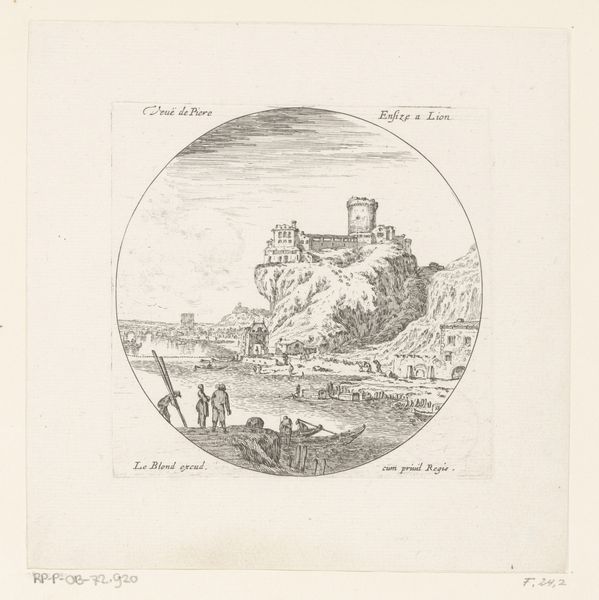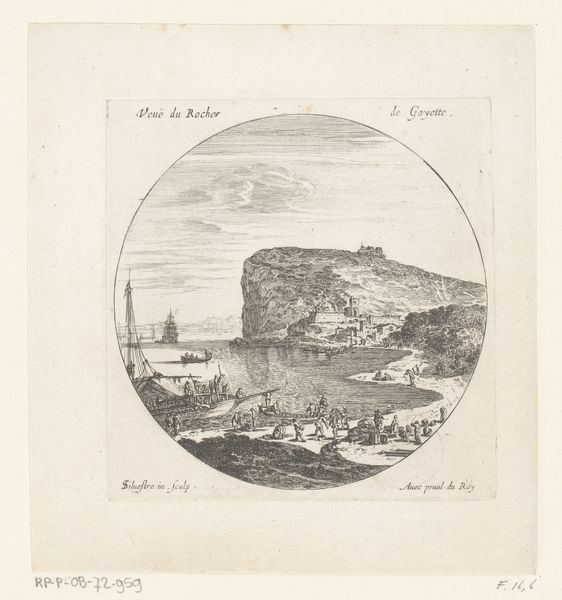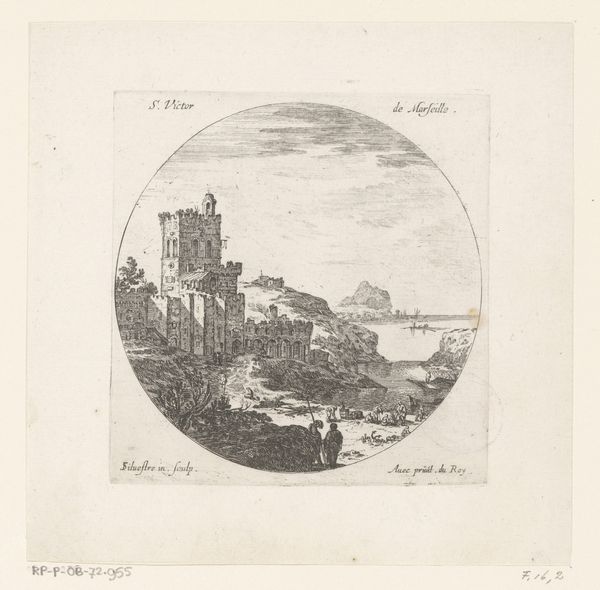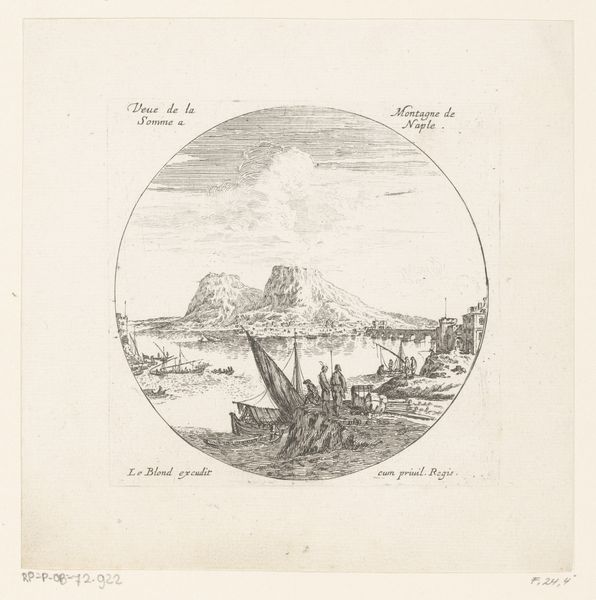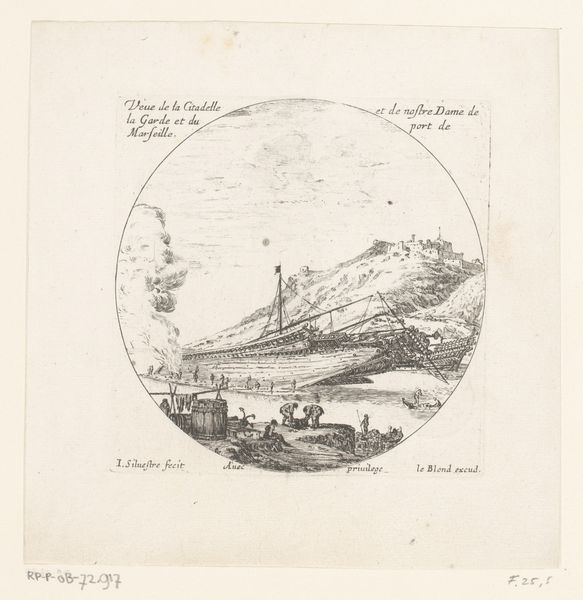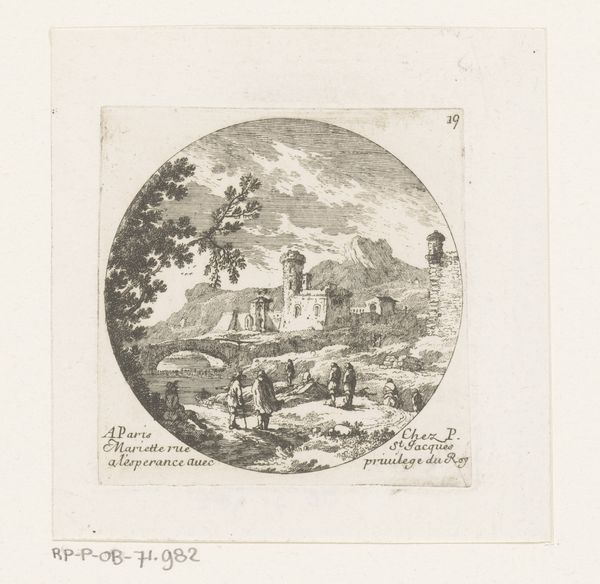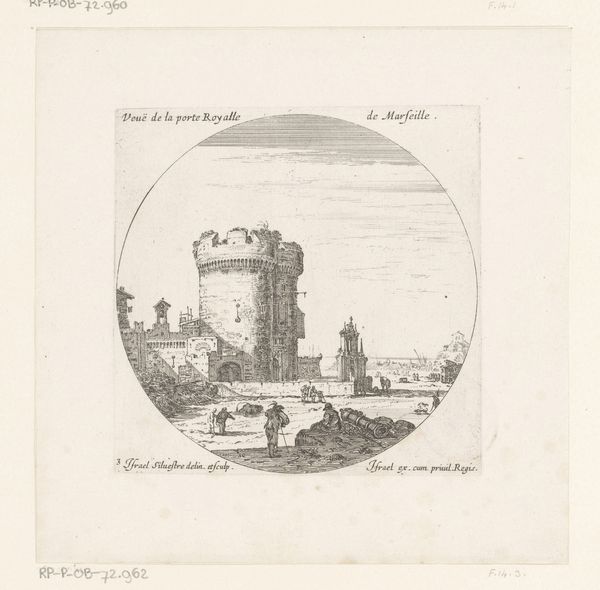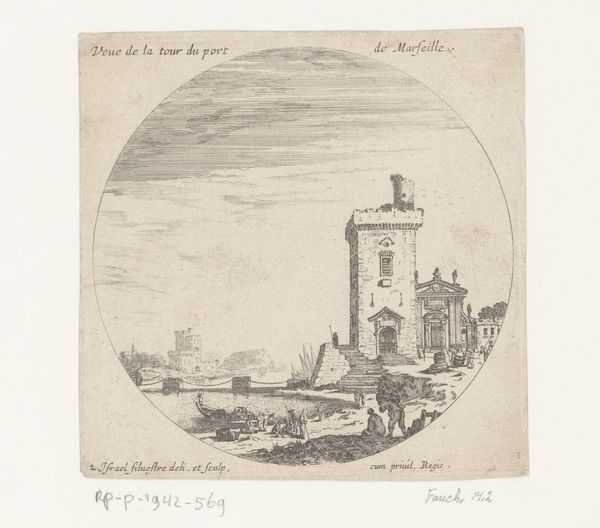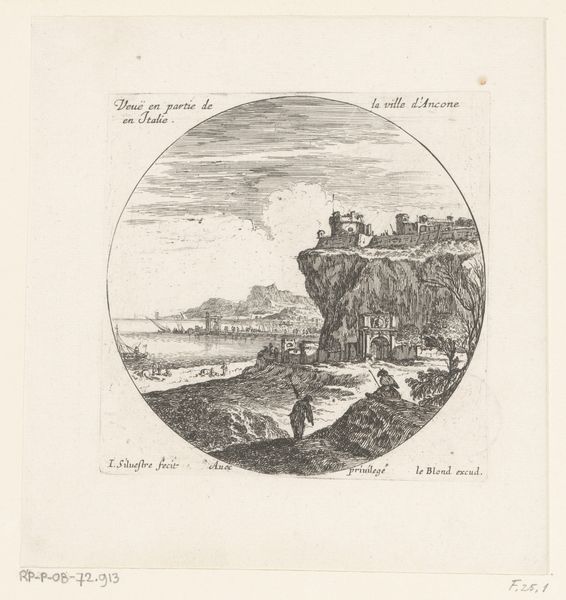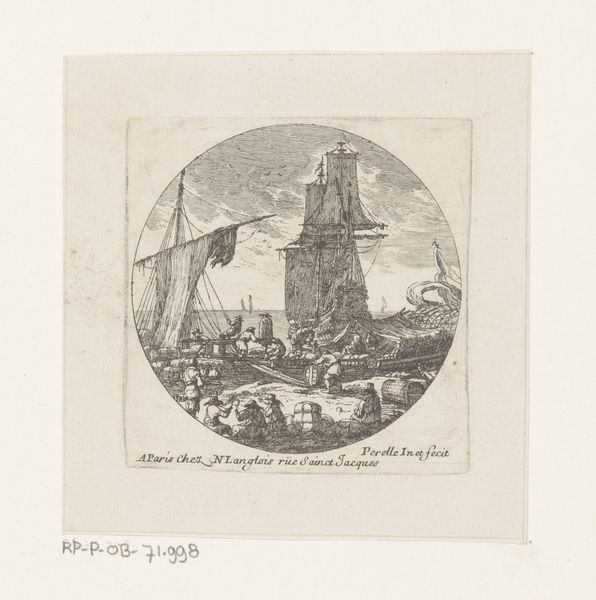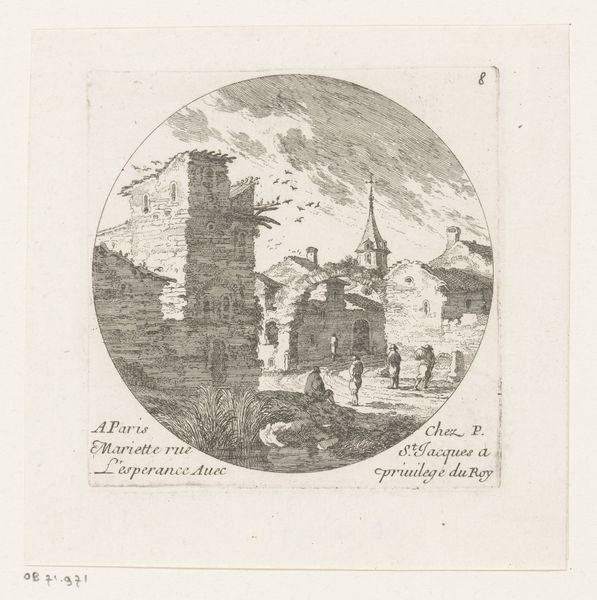
print, etching
#
baroque
# print
#
etching
#
landscape
Dimensions: height 117 mm, width 120 mm
Copyright: Rijks Museum: Open Domain
Curator: Here we have Israel Silvestre's "View of the Bastion of Saint-Jean in Lyon," an etching, probably dating from sometime between 1645 and 1691. Editor: My initial reaction? I’m immediately drawn to its almost unsettling stillness. The way the scene is captured within that perfect oval feels both intimate and distanced. It is also monochrome in an interesting way. Curator: Indeed. It's remarkable how Silvestre uses simple lines to create depth and texture. Consider the various textures of the stone of the bastion contrasted with the fluidity of the water. It's all in the careful layering and the control of the etching needle. The architecture dominating the topography. Editor: Yes, and let's not forget that etching is essentially an industrial process—a collaboration between artist, material, and workshop. Those workers loading barrels in the foreground were part of a system allowing artwork, like this print, to become reproducible commodities. Their labor built both the city's infrastructure, and our capacity for representing and circulating this place and life. Curator: And perhaps circulating fantasies. Etchings like this helped construct and solidify a certain ideal image of urban centers. Think about the aspirations embedded in presenting such a... controlled view. The bastion itself—a symbol of power and order—is made appealing to viewers who seek to own this vision. I imagine this object working like a luxury postcard of its time. Editor: Luxury tied to power, too. Prints like this weren’t simply beautiful; they were markers of prestige, distributed within a social hierarchy of capital and taste. Did owning a "Veue du Bastion" contribute to, or mask the social order and real urban challenges outside the frame? Curator: Maybe both? Art often straddles that line, doesn't it? It immortalizes and idealizes, while also indirectly highlighting what is missing, or what has been purposefully left unsaid. Ultimately, to me it’s just nice to consider how simple and complex objects shape, at the same time, how we perceive reality. Editor: Right. Art made through labor and industry, subtly but significantly influencing our understandings. Gives you a new perspective, eh?
Comments
No comments
Be the first to comment and join the conversation on the ultimate creative platform.
